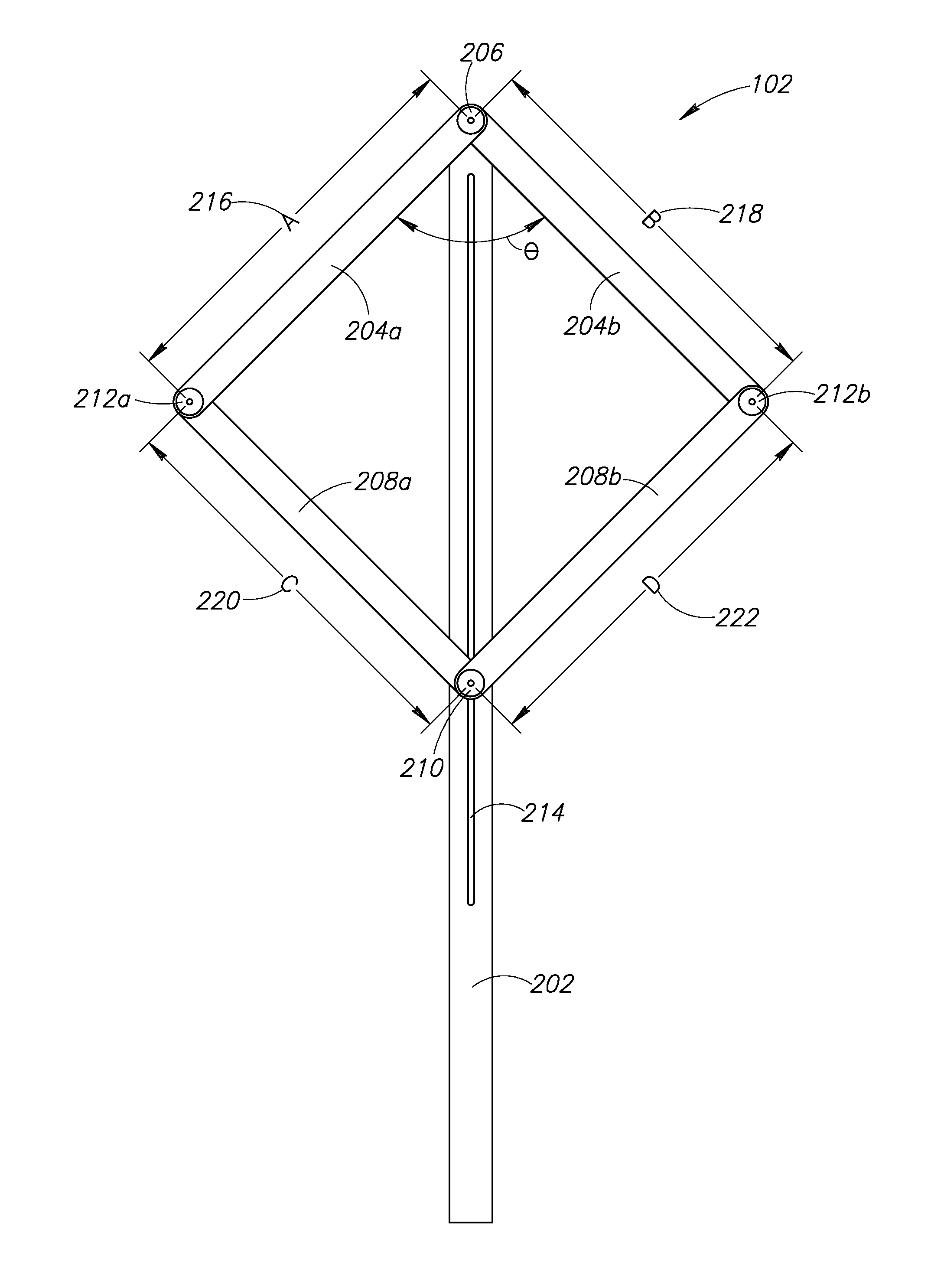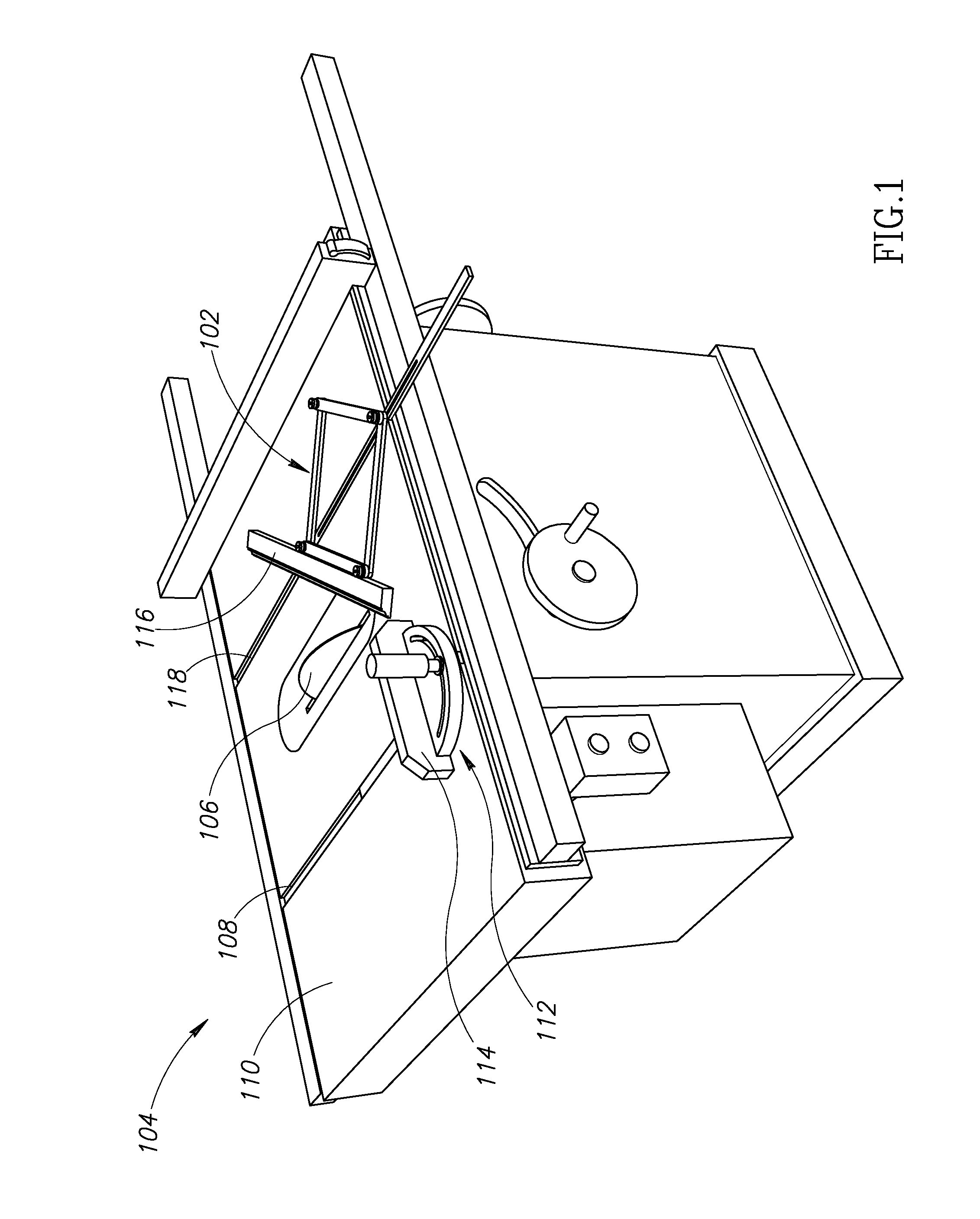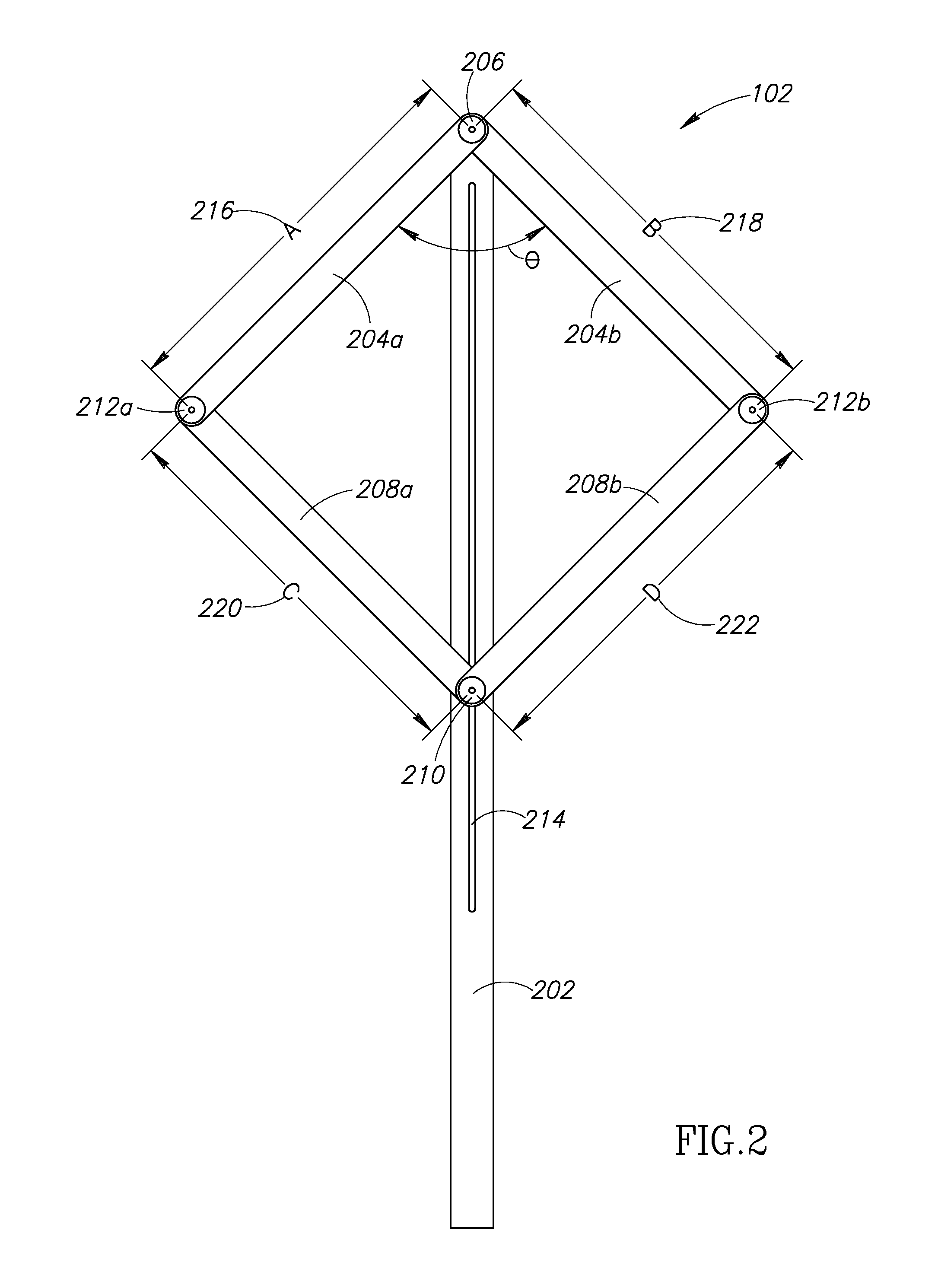Angle bisector gauge
a technology of bisector and gauge, which is applied in the direction of measuring gauges, woodworking apparatus, manufacturing tools, etc., can solve the problems of many opportunities for error to creep into a process that requires precision, and the traditional methods used to form mitered joints oftentimes do not allow for acceptable, and the chance of inaccuracy in cutting the boards is increased
- Summary
- Abstract
- Description
- Claims
- Application Information
AI Technical Summary
Benefits of technology
Problems solved by technology
Method used
Image
Examples
Embodiment Construction
[0024]In the fields of carpentry and woodworking, there arise many occasions where the woodworker must measure angles and make precise cuts on two boards so they will mate together to form an accurate mitered joint. This is especially true when making frames, such as for pictures, widows, or other items that can benefit from a mitered frame, or such as when doing finish carpentry on a house, such as cutting and installing baseboard, chair rail, panel moldings, or other decorative moldings that can be applied to walls or ceiling of a building. A mitered joint is one in which two mating pieces have their ends cut at an angle and the angled cuts are mated together. For example, when making a rectangular picture frame, the corners of the frame are typically 90°. Accordingly, to form one corner of the picture frame, two workpieces may have their ends cut at 45° angles and the angled cuts are mated together to form a 90° corner of the frame. While many tasks require mitered joints that fo...
PUM
 Login to View More
Login to View More Abstract
Description
Claims
Application Information
 Login to View More
Login to View More - R&D
- Intellectual Property
- Life Sciences
- Materials
- Tech Scout
- Unparalleled Data Quality
- Higher Quality Content
- 60% Fewer Hallucinations
Browse by: Latest US Patents, China's latest patents, Technical Efficacy Thesaurus, Application Domain, Technology Topic, Popular Technical Reports.
© 2025 PatSnap. All rights reserved.Legal|Privacy policy|Modern Slavery Act Transparency Statement|Sitemap|About US| Contact US: help@patsnap.com



